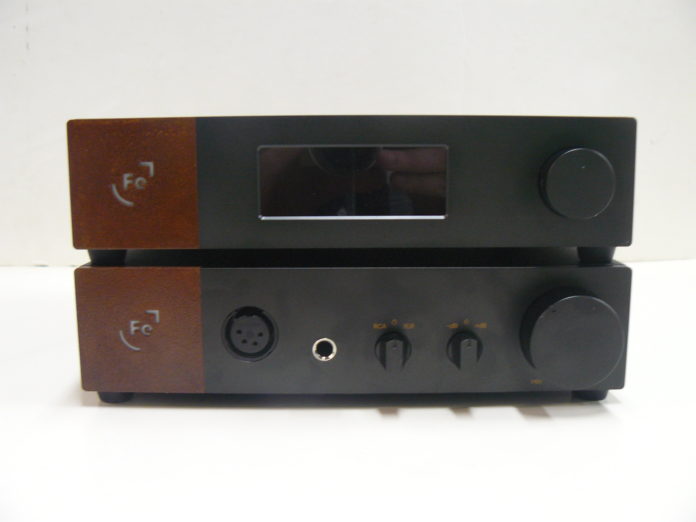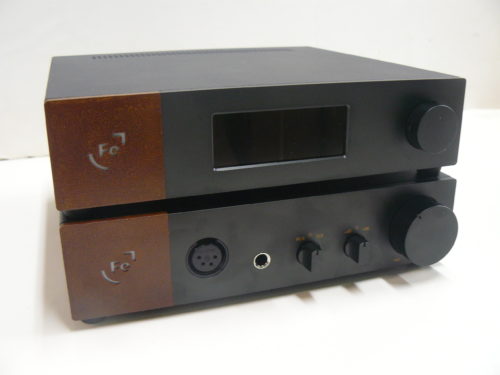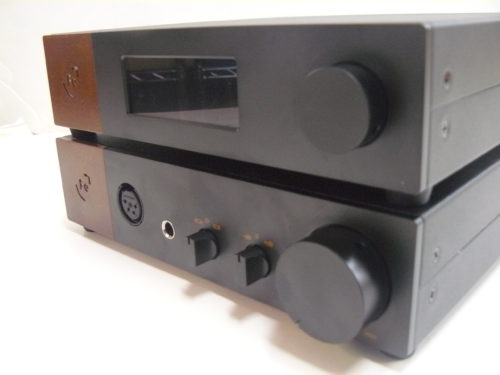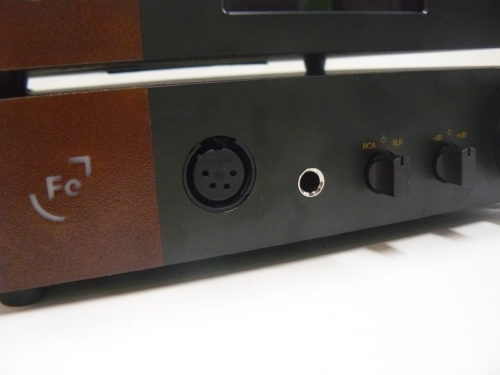A good amplifier is essential to getting the most out of your high-end headphones, and there is a ton of brands with different models to choose from. You have your heavy hitters like McIntosh and iFi, but other brands like Questlye and RME also offer something different for a particular audience. Reference style systems are usually marketed to pro-audio consumers but are also great for audiophiles who want to hear everything their headphones have to offer. The Ferrum OOR and its power system companion the Hypsos, is one of these systems, and it so happens to be packed with a ton of features. On the outside, this looks like a system that’ll cost you a combined $3190, but does it have the ability to back up that price?
Build
Both the OOR and the Hypsos have the stellar builds you’d expect from an amplifier set at this price. You can find some pretty bulky systems in this range, but thankfully, the OOR and Hypsos are nicely compact and organized systems. They definitely have a considerable weight to them, but the dimensions of the chassis on both devices are just big enough to look good on any desktop surface. I particularly like the classic boxy black outside meshed with the colorful logo plate and light-up LEDs on the side of both units. Each unit also has a dial that controls different aspects of their respective systems. The dial on the OOR controls volume, and it operates as smoothly as you could ask for. On the Hypsos, the dial has more of a click and is used mainly to navigate menus.
Ins and Outs
On the OOR, you have two connection options for headphones. One for 4-pin XLR and one for quarter-inch jacks. Next to them is a switch that will let you toggle between RCA and XLR input options. I had my unit set on RCA for my connection. The back of the OOR has both of your XLR and RCA inputs and outputs, as well as other notable features like an adjuster for LED brightness and binary bypass switch. Both devices also have a 4TSD coupler that connects the systems to each other. The Hypnos doesn’t offer much else aside from a micro-USB port.
Design
The OOR is a class AB design amplifier substituting circuitry for transistors improving signal flow and performance. For the amplifier, all of its circuitry that it does use is fully balanced in an analog design. One of the most notable internal components within the OOR and the Hypsos is the Ferrum Power Link, which uses a Weipu coupler that connects both devices which secure a stable voltage for more desirable performance.
- Gain (dB): balanced -4 dB, + 6dB, +16 dB / single ended -10 dB, 0 dB, 10 dB
- Operation: Fully balanced, proprietary discrete power amp technology
- Inputs: XLR, RCA, 2.5 mm DC connector centre positive, proprietary 4-pin DC connector
- Outputs: Balanced 4-pin XLR, 6.35 mm jack
- Frequency Response: 20 Hz – 100 kHz 0.1 dB
- Output Power Single Ended: 400 mW into 300 Ω, 2 W into 60 Ω
- Output Power Balanced: 1.600 mW into 300 Ω, 8 W into 60 Ω
- THD + Noise: TBA
- Input Impedance: 94 kΩ
- Output Impedance Single Ended: 22 Ω on pre-amp
- Output Impedance Balanced: 44 Ω on pre-amp
- Output headphones Impedance: < 0.3 Ω
- Power Consumption: Idle <15 W
- Power Adapter: 100/240 V AC to 22-30 V DC
- Dimension (W x D x H) (In/cm): 8.6 x 8.1 x 2.0 inch / 21.7 x 20.6 x 5 cm
- Weight (kg/lbs): 1.8 kg / 3.97 LBS
Sound Quality
I spent many hours testing out the OOR connected to the Hypsos power system using a variety of different headphones. I wanted to get the full impression of what this amplifier is capable of, and I was not disappointed. On a whole, the OOR gave me a similar impression to that of a Questyle amplifier like the CMA Twelve, or an RME device like the ADI-2, playing on a similar level of fluent, uncomplicated transparency and articulation. The sound signature here is that of one f the best reference style devices on the market.
In terms of range, I found that this amplifier could handle almost anything I put through it. This is a particularly revealing amp as well, showcasing everything the sound signature of your headphones has to offer, even the details you might not want to call attention to. While there’s much to be said about the prospects of the OOR, it begs the question of whether or not the Hypnos adds anything to the overall timbre of the pair too. It turns out the Hypsos does have a significant impact on specific sonic characteristics, such as the enhancement of accentuation on certain instruments and effects. There’s more of a snap on the plucking of strings, or orchestral staccato. A much tighter grasp is emphasized on the release of notes, which can be perceived when pairing headphones like the Sennheiser HD800s.
I spent a good amount of time using the OOR with the 800s, and with them, I felt like the amp could most accurately display the amp’s most integral qualities. From the softest hum to the greatest crescendo, the OOR handles the dynamic range in the 800s with effortless and realistic performance that complements the headphone in an enticing way. I kept the OOR parked around 2 o’clock with a standard nominal output at 24.0V on the Hypsos. Spatial imaging receives a wonderful enhancement as well, increasing the depth of each layer within the leveled soundstage of the HD800s.
This sensation is also persistent when I switched over to the Focal Clear MG, only here I set the output voltage at 22.4V and park the volume dial at 12 o’clock for even more headroom. With the Clear MG, I was able to get a bit more warmth while still maintaining an equal level of clarity that I became used to with the OOR. The Hypsos is able to perform its gripping nature with even more extended treble and midrange richness. I think turning off the Hypsos for the Clear MG also works in its favor for those looking for more smoothness over quick impact.
This is also an instance where the sweet spot tuning really benefits those who might not be looking for the most revealing experience but still like detail and texture in your music. It speaks volumes to the versatility of the OOR with the Hypnos that makes it stand out among other amps.
Summary
This amp combo is one of the best pieces of gear you can buy period. Not only is it a powerful system with plenty of features, but its reference style sound output is in a league of its own, offering some of the purest detail that I’ve heard recently. Even though it’s quite a pricy product, the OOR and Hypsos are the perfect endgame amplifier for those looking for a professional system.

The Ferrum OOR and Hypsos are both available at Audio46.
MAJORHIFI may receive commissions from retail offers.












